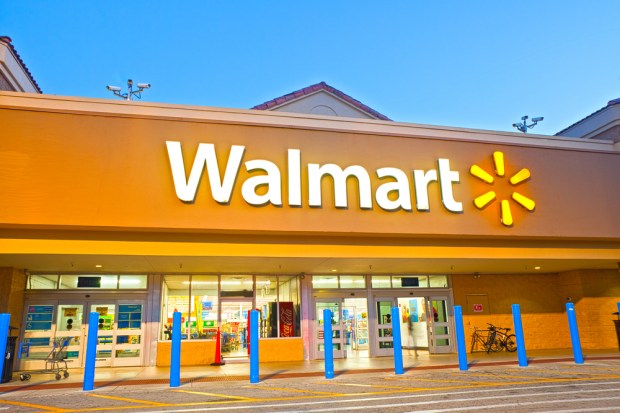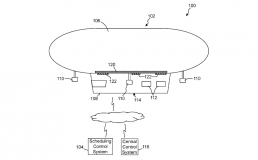Sizzle Fizzle: Walmart’s Sizzling Online Summer, Bitcoin’s Down Under Bummer

Walmart, tech behemoth? From digital to drones, the big boxer is proving nimble of foot when it comes to plying wares across all manner of channels. Plus, Uber follows up on a tip, $50 million of them, and cryptocurrencies get some jaundiced eyes from regulators Down Under.
It’s Friday, which can only mean one thing — time to see what Sizzled and what Fizzled this week.
Sizzle
Uber: Retooling is helping Uber gain some traction, and is garnering some positive reaction from drivers. Along with its “180 Days of Change” initiative, the company debuted tipping in June, and the cha-ching accruing to the drivers has already been notable. How much cha-ching? How about $50 million in tips? Turns out Uber drivers like it of course, and so do ridesharing riders. That sentiment is also borne out by the $250 million in tips that have come through rival Lyft’s service.
Chinese consumer: Truly acting upon the global stage, the Chinese consumer has captured the attention and efforts of companies including Baidu and PayPal. The latter released data this past week showing some sizzle in terms of online shopping, as surveyed across Chinese customers in five major cities. Cross-border buying remains strong, with a survey showing 51 percent of consumers shopped on foreign sites in the past year. And there’s good news for U.S. firms, as 89 percent shopped across U.S. digital channels in the past year.
Business trip expenses and millennials: OK, so the millennial is typically painted in broad brush strokes, with fruit fly attention spans, and so on. But here’s an attribute overlooked: They’re mindful of the bottom line. Concur research found, in looking at $36 billion in travel spend across the globe, millennials spend 18 percent less than older peers on dining and entertainment when out on the road.
Fizzle
Blue Apron: You know it’s never a good sign for a company when recruiters get fired. For Blue Apron, the beleaguered meal kit delivery firm, news came this week it had laid off 14 members of its team and also put a hiring freeze in place. Amid loss making operations and a busted IPO, as well as the loss of its COO, the meal is anything but satisfying. Might this just be an appetizer for a subscription service shakeout in the meal delivery space?
Phone number hijacks: To paraphrase a hit song, I never met you, and this is crazy. Now it’s come down to thieves grabbing phone numbers — that’s your digits, as they call ’em — and using them to get into accounts requiring phone numbers as security prompts and backups. The cybercriminals are changing passwords and locking owners out while accounts get drained. One exposed area: Cryptocurrencies, where digital denominations disappear in a flash. And speaking of cryptocurrencies…
Cryptocurrencies: Australia says digital currencies have been a conduit for organized crime in the country. A new report that debuted from the Australian Criminal Intelligence Commission (ACIC) has estimated digital banking and the cryptocurrencies have contributed to as much as $28 billion in annual criminal activity. And Canada has also sounded an alarm on Bitcoin and its peers. Regulators in the country — specifically the Canadian Securities Administrators — have said more oversight is needed in the burgeoning sector.
Sizzle of The Week: Walmart Multi-Front Commerce Battle
Two years ago, in the summer of 2015, Amazon managed to end Walmart’s 20-plus year reign as the world’s largest retailer (as measured by market cap).
As measured by revenue, Walmart remained significantly larger — and does to this day — but at the time, analysts and experts mostly intoned the writing was on the wall for Walmart. Despite its scope and scale, Walmart was retail’s past – Amazon was the future. No one predicted that Walmart would close its doors immediately, but few believed the retailer, with its anemic online sales in 2015 and limited digital footprint, had any serious chance of challenging the massive online retail and logistics company called Amazon.
Walmart obviously did not share in that popular opinion, and has spent the two years since doing quite a number of things to leverage its strengths while investing in areas that needed attention.
For example, Walmart acquired Jet.com for $3.3 billion and appointed its CEO Marc Lore as Walmart’s eCommerce CEO. It’s also acquired a number of niche, millennial-focused e-tailers including Moosejaw, Bonobos, ModCloth and ShoeBuy, and in quick succession. It lowered the price threshold for free shipping to $35, a move that forced a rare act of following from Amazon, and began offering discounts to consumers who purchased online but picked up in-store.
Additionally, Walmart rolled out Walmart Pay to all of its stores in the U.S. about a year ago and has since managed to achieve adoption levels which have consistently evaded Apple Pay (which has been in market three times as long, according to PYMNTS’ quarterly Mobile Wallet Adoption Data). Walmart also rolled out the option to buy groceries online, pick up in-store with a curbside pick-up component for users of its app.
And, those efforts seem to be moving the right needles in the right direction. Walmart’s online sales jumped this year: 63 percent in Q1 and 60 percent in Q2.
But what earned Walmart’s place atop the Sizzle of the Week this week is what has happened over the last five days, starting with the expansion of its grocery delivery program — with a big assist from its new strategic partner, Uber.
“We’re all about finding new ways for you to check ‘grocery shopping’ off your list a little faster — including making home delivery an option,” Mike Turner, Walmart’s vice president of eCommerce operations, wrote in a post on the company’s blog. “Hopefully, this expanded offering, and more like it, will speed up the shopping experience and give you back something just as precious as money — time.”
The new program allows Walmart to leverage a massive network of stores (90 percent of Americans live within 15 minutes of at least one Walmart) and tap Uber’s network of drivers to get that last mile of delivery nailed down. Uber and its drivers also get a piece of the win here, as the move increases the utilization of the Uber ridesharing network.
Phoenix, Tampa, Orlando and Dallas are the four cities testing the program and a wider launch is expected. The offering is a direct answer to Amazon Fresh’s grocery delivery program.
But Uber wasn’t Walmart’s highest profile pairing this week. That honor goes to Google, the firm through which Walmart will take the voice-activated commerce battle to the streets.
Beginning in September, Google will offer hundreds of thousands of Walmart items for ordering via its voice-controlled Google Home assistant, according to Lore. Lore further noted this tie-in will give consumers access to a wider range of goods available on Home than ever before. It also gives Google and Walmart a chance to work together to take on their common competitor, Amazon with Alexa, and attempt to slow its rather impressive voice-activated commerce lead.
Amazon Echo devices represented 72.2 percent of the market for voice-activated speakers in 2016, far ahead of the Google Home’s 22 percent, according to research firm eMarketer. Lore said in the blog post that Walmart was also integrating its quick reordering tool into Google’s same-day delivery service.
“One of the primary use cases for voice shopping will be the ability to build a basket of previously purchased everyday essentials,” he said in an interview with Reuters.
Lore added that Walmart has bigger plans for voice shopping next year which will bring the chain’s staggering 4,700 U.S. stores to “create customer experiences that don’t currently exist within voice shopping anywhere else.”
And speaking of new experiences, and for the last member of Walmart’s eCommerce hat trick of the week: The company also announced it will be taking the battle with Amazon to the sky.
Literally.
According to reports, Walmart is working to establish sky-based drone delivery capabilities. Reviews of a new patent filing indicate Walmart wants to build blimp-type vessels to serve as floating warehouse hubs for the retailer. Drones would extract online Walmart products from the sky-bound warehouses and subsequently deliver them directly to consumers below. See the diagram for an idea of how this would work:

Either a human pilot or an automated system would operate the warehouses, which would hover at up to 1,000 feet in the sky. The high-flying warehouses and their accompanying drone-based staff would help bolster faster package delivery rates and lower fulfillment costs for Walmart’s online orders, allowing the retailer to bypass the use of human employees.
In addition to being in the drone business, sky-based Walmart online warehouses could help the retailer broaden its distribution footprint, since standard, ground-based warehouses have the limitation of only being able to deliver packages to places within driving range.
And if all of that sounds a bit sci-fi and pie-in-the-sky (pun fully intended), note Walmart is not the first firm to float (we’ll stop now) this idea. Amazon has its own blimp-based warehousing system patent out there as well, though it is reportedly less detailed than Walmart’s.
Those, we should note, are just the digital accomplishments.Walmart is reportedly close to inking a partnership with financial company Affirm that will make it possible to offer installment loans to customers with thin or remedial credit profiles.
Whether any or all of this will be decisive in Walmart’s battle with Amazon for retail dominance remains to be seen. After all, Amazon has been almost equally busy this summer. But Walmart has made it clear they are bringing new meaning to the words “active competition.”
And that certainly merits the Sizzle of the Week.